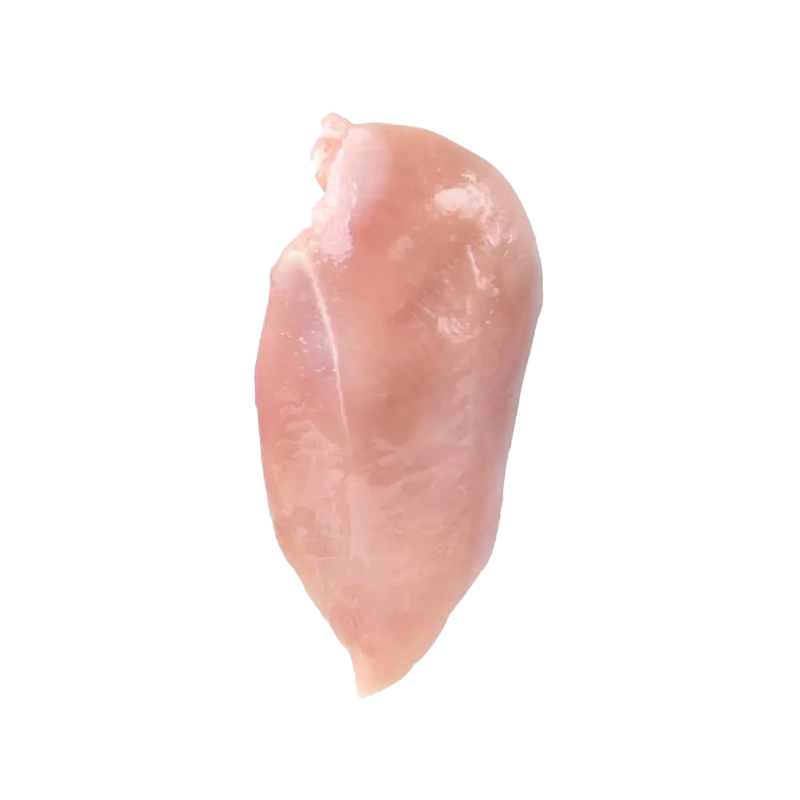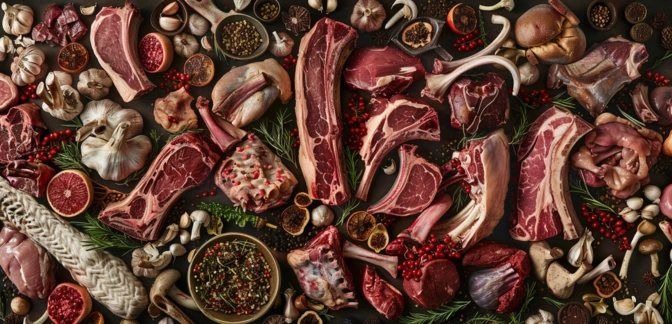Meat — Nutrients, Health Benefits, And Shopping Tips

Written by Listonic Team
Last update on September 4, 2024
Did you know?
Health benefits
- High in protein, essential for muscle growth, repair, and overall body function.
- Rich in essential vitamins and minerals such as B vitamins (B12, niacin, riboflavin), iron, zinc, and selenium, which support energy metabolism, immune function, and overall health.
- Provides healthy fats (depending on the cut), which supply energy and support cell function.
- Contains all essential amino acids, making it a complete protein source necessary for various bodily functions.
- Supports cognitive function due to its high B12 content, which is crucial for brain health and function.
Health risks
- High fat content particularly in red and processed meats, which can raise cholesterol levels and increase the risk of heart disease when consumed frequently.
- High sodium content in processed meats, which can contribute to hypertension and increased cardiovascular risks.
- Presence of nitrates and nitrites in cured meats, which have been linked to an increased risk of cancer, particularly colorectal cancer.
- Risk of contamination with harmful bacteria such as Salmonella or E. coli, particularly if the meat is not properly cooked to a safe internal temperature.
How to choose meat
Meat, whether beef, pork, or poultry, should have a vibrant, natural color with firm, moist flesh. The surface should be smooth and free of any excess moisture, which can indicate poor handling or storage.
Avoid meat that has a dull color or a slimy texture, as these are indicators of age or spoilage. Quality meat should smell fresh and have a texture that is consistent with its type, offering a flavorful and nutritious addition to meals.

How to store meat
Raw meat should be stored in the coldest part of the refrigerator, typically the bottom shelf. Wrap it tightly in plastic wrap or store it in an airtight container to prevent contamination. Properly stored, fresh meat can last for up to five days.
Exposure to air can cause meat to spoil quickly. Avoid storing raw meat near ready-to-eat foods to prevent cross-contamination. Always cook meat within the recommended timeframe and use separate cutting boards for raw and cooked foods.
✅ Extra Tip
How long does it last?
Meat can last for 3-5 days in the refrigerator. For longer storage, meat can be frozen for up to 6-12 months. Proper packaging, such as vacuum-sealing, helps maintain its quality over longer storage periods.
What to do with leftovers?
Leftover meat, whether beef, pork, or chicken, can be used in a variety of savory dishes. Slice it thinly and add to sandwiches, wraps, or salads for a flavorful protein source, or chop it up and mix into a stir-fry with vegetables and rice. Meat is also great when added to pasta dishes, such as a meat sauce or a creamy pasta bake.
Use leftover meat in a casserole with potatoes, cheese, and vegetables, or mix it into a soup or stew for added richness and flavor. If you have a lot of meat, consider making a batch of tacos or burritos, or using it as a filling for stuffed vegetables like peppers or zucchini. Meat can also be added to pizzas or flatbreads, or used as a topping for nachos with melted cheese and jalapeños. For a quick snack, reheat the meat and serve it with a dipping sauce or on a bed of greens.
👨⚕️️ Medical disclaimer
Discover products from other categories
Listonic Team
Fact-checked
Our editorial team checked this article to make sure it was accurate at the time of publishing it.
Get the top-rated shopping list app on your phone!







